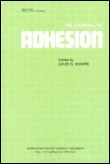
JOURNAL OF ADHESION
Scope & Guideline
Advancing adhesion science for a connected future.
Introduction
Aims and Scopes
- Adhesive Bonding Techniques:
Research on various adhesive bonding techniques including structural adhesives, pressure-sensitive adhesives, and bio-based adhesives, exploring their applications in industries such as automotive, aerospace, and construction. - Interface Characterization:
Studies focusing on the characterization of interfaces in bonded joints, including surface treatments, roughness effects, and the influence of environmental conditions on adhesion. - Mechanical Performance Evaluation:
Investigation of the mechanical properties of adhesive joints under various loading conditions, including static, dynamic, and fatigue loads, to understand failure mechanisms and durability. - Material Development:
Development and optimization of new adhesive materials, including nanocomposites and bio-based adhesives, aimed at enhancing performance and environmental sustainability. - Simulation and Modeling:
Application of numerical methods and simulation techniques to predict the behavior of adhesive joints, including finite element analysis and machine learning approaches. - Innovative Applications:
Exploration of novel applications of adhesives in emerging fields such as additive manufacturing, microelectronics, and biomedicine.
Trending and Emerging
- Sustainable and Bio-Based Adhesives:
There is a growing trend towards the development of sustainable and bio-based adhesives, driven by environmental concerns and the need for greener materials in various industries. - Nanotechnology in Adhesion:
Research incorporating nanotechnology to enhance adhesive properties, such as strength and durability, is on the rise, with a focus on nanocomposites and surface modifications. - Adhesion in Additive Manufacturing:
The exploration of adhesion challenges and solutions in additive manufacturing processes is emerging as a significant area of study, addressing issues related to layer bonding and material compatibility. - Smart Adhesives:
The development of smart adhesives with responsive properties that can adapt to environmental changes or external stimuli is gaining traction, indicating a move towards multifunctional materials. - Advanced Characterization Techniques:
There is an increasing emphasis on advanced characterization techniques, such as atomic force microscopy (AFM) and digital image correlation, to better understand adhesion mechanisms at micro and nanoscale levels.
Declining or Waning
- Traditional Adhesive Systems:
There appears to be a waning interest in conventional adhesive systems, such as standard epoxy and polyurethane adhesives, as researchers increasingly explore advanced materials and novel formulations. - Basic Adhesion Theories:
Research focusing solely on fundamental adhesion theories, such as van der Waals forces and basic surface energy concepts, is becoming less frequent as the field shifts towards application-driven studies and complex system interactions. - Single-Component Adhesives:
The investigation of single-component adhesives is declining, with more studies focusing on multi-component systems or hybrid materials that offer enhanced performance.
Similar Journals

JOURNAL OF MATERIALS ENGINEERING AND PERFORMANCE
Innovating for Tomorrow's Engineering ChallengesJOURNAL OF MATERIALS ENGINEERING AND PERFORMANCE, published by Springer, serves as a vital resource for researchers and professionals in the fields of materials science, mechanical engineering, and mechanics of materials. With an ISSN of 1059-9495 and E-ISSN of 1544-1024, this journal boasts a commendable track record since its inception in 1992 and is set to continue providing valuable insights until 2024. Positioned in the Q2 quartile of its categories, the journal is ranked #246 in Mechanical Engineering and #168 in Mechanics of Materials according to Scopus, reflecting its commitment to high-quality research. While currently not adopting an open access model, it remains accessible to academic professionals and students eager to advance their knowledge in the rapidly evolving domain of materials engineering. The scope encompasses innovative research focused on material performance, engineering applications, and technological advancements, making it an indispensable tool for those at the forefront of the field.
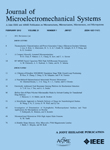
JOURNAL OF MICROELECTROMECHANICAL SYSTEMS
Elevating Research Standards in MEMS ApplicationsThe JOURNAL OF MICROELECTROMECHANICAL SYSTEMS, published by the IEEE-Institute of Electrical and Electronics Engineers Inc, stands as a pivotal resource in the fields of Electrical and Electronic Engineering as well as Mechanical Engineering. With an ISSN of 1057-7157 and an E-ISSN of 1941-0158, this esteemed journal has been at the forefront of advancing microelectromechanical technology since its inception in 1992. As evidenced by its impressive Scopus rankings, holding a Q2 position in Electrical and Electronic Engineering and a Q1 status in Mechanical Engineering, the journal serves as a conduit for high-quality research and innovative applications in the microelectromechanical systems domain. Notably, it is well-regarded yet accessible, making it an essential resource for researchers, professionals, and students alike, who are eager to contribute to or stay informed on the latest advancements. Published in the United States, the journal covers a broad array of topics within its scope, ensuring a comprehensive overview of emerging trends and technologies. It remains dedicated to fostering scholarly communication and innovation in this rapidly evolving field.
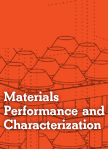
Materials Performance and Characterization
Elevating Standards in Materials CharacterizationMaterials Performance and Characterization is a distinguished journal published by the American Society for Testing and Materials (ASTM), specializing in the field of materials science. With ISSN 2379-1365 and E-ISSN 2165-3992, this journal serves as a pivotal platform for disseminating innovative research in the areas of metals and alloys, polymers and plastics, ceramics and composites, and mechanics of materials. Established in 2012, it continues to feature peer-reviewed articles that contribute to both theoretical advancements and practical applications, emphasizing the importance of materials performance in various industries. Despite its current Q4 and Q3 rankings across categories as of 2023, the journal is committed to enhancing its influence in the materials science community, fostering engagement among researchers, professionals, and students alike. The journal is essential for anyone seeking to stay at the forefront of materials research and characterization.
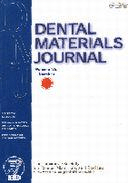
DENTAL MATERIALS JOURNAL
Transforming Dentistry through Material ScienceDENTAL MATERIALS JOURNAL is a prestigious publication hosted by the Japanese Society of Dental Materials and Devices, dedicated to advancing the field of dental materials science. With an emphasis on both fundamental and applied research, the journal serves as a platform for the dissemination of high-quality studies related to ceramics, composites, and other innovative materials in dentistry. Since its inception in 1982, the journal has garnered an impressive recognition, currently positioned in the Q2 quartile for both Ceramics and Composites and General Dentistry, alongside Scopus rankings that highlight its significant impact in the field. Though this journal does not offer open access, it remains a valuable resource for researchers, practitioners, and students in Japan and worldwide, aiming to enhance the knowledge and technological advancements in dental materials. The commitment of the DENTAL MATERIALS JOURNAL to fostering innovation and collaboration is evident through its consistent publication of rigorous research contributing to the evolving landscape of dental science.
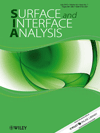
SURFACE AND INTERFACE ANALYSIS
Advancing Understanding of Surface DynamicsSURFACE AND INTERFACE ANALYSIS, published by WILEY in the United Kingdom, is a renowned journal specializing in the examination of nanoscale phenomena and the properties of surfaces and interfaces across various materials. With a focus on advancing the fields of Chemistry, Condensed Matter Physics, and Materials Science, this journal has established itself as a critical resource since its inception in 1979, bridging over four decades of scientific discourse. Notably, it holds a commendable position in the Scopus rankings, emerging in the 2023 Q3 quartile across multiple categories, including Chemistry (miscellaneous) and Surfaces, Coatings, and Films. Although it does not currently offer Open Access, SURFACE AND INTERFACE ANALYSIS remains pivotal in disseminating high-quality research, providing an essential platform for academic scholars, industry professionals, and students aiming to deepen their understanding of surface phenomena and material characteristics. Its comprehensive coverage of innovative methodologies, experimental results, and theoretical insights reaffirm its significance in the scientific community.

JOURNAL OF ADHESIVE DENTISTRY
Advancing Adhesive Innovations for a Healthier SmileThe Journal of Adhesive Dentistry is a premier publication dedicated to advancing the science and practice of adhesive dentistry, published by Quintessence Publishing Co Inc. Known for its rigorous peer-reviewed research, this journal offers an invaluable resource for researchers, dental professionals, and students engaged in the fields of orthodontics, periodontics, and oral surgery. With a significant impact factor and ranked in the top quartile for its respective categories, the journal consistently publishes high-quality articles that influence clinical practices and innovations. Since becoming an Open Access publication in 2022, it has enhanced global accessibility to groundbreaking research, fostering collaboration and knowledge-sharing across diverse dental disciplines. Covering converged years from 1999 to 2024, the journal remains a vital platform for disseminating critical findings that shape the future of adhesive techniques and oral health outcomes.

COLD REGIONS SCIENCE AND TECHNOLOGY
Unveiling the Science Behind Cold RegionsCOLD REGIONS SCIENCE AND TECHNOLOGY is a prestigious journal published by Elsevier, widely recognized for its substantial contributions to the fields of Earth and Planetary Sciences and Geotechnical Engineering and Engineering Geology. Established in 1979 and with a converged publication cycle extending to 2024, this journal holds an impressive position within academic circles, reflected in its Q1 ranking for both categories in the latest 2023 evaluations, showcasing its relevance and influence in the scientific community. With a Scopus ranking of 23rd out of 195 in general Earth and planetary sciences and 40th out of 229 in its specialized engineering fields, the journal serves as a vital resource for researchers, professionals, and students seeking to advance their understanding of the complexities of cold region environments. Although currently not an open-access publication, COLD REGIONS SCIENCE AND TECHNOLOGY continues to be an essential platform for innovative research and interdisciplinary studies, facilitating knowledge exchange among experts addressing the challenges posed by cold climates.

Elastomers and Composites
Fostering Collaboration in Elastomeric ResearchElastomers and Composites is a leading academic journal dedicated to the advancement of knowledge in the fields of polymer science and materials engineering, specifically focusing on elastomers and composite materials. Published by RUBBER SOC KOREA, this journal serves as a vital platform for researchers and professionals to disseminate innovative research findings and insights in material properties, applications, and synthesis techniques. Although it currently does not offer open access, the journal provides rigorous peer-reviewed content that enhances the global dialogue on elastomeric materials and their composites, reflecting its commitment to high-quality scholarship. With a strong emphasis on practical relevance and theoretical advancements, Elastomers and Composites aspires to reshape industry practices and academic thought, making it an invaluable resource for students, researchers, and practitioners alike. Positioned strategically within its field, this journal fosters collaboration and dialogue among scientific communities, all while supporting the growth of cutting-edge research programs worldwide.

International Journal of Surface Science and Engineering
Innovating the Interface of Engineering and Materials ScienceThe International Journal of Surface Science and Engineering, published by INDERSCIENCE ENTERPRISES LTD, serves as a vital platform for researchers and professionals in the field of mechanical engineering, surfaces, coatings, and materials science. With an ISSN of 1749-785X and an E-ISSN of 1749-7868, this journal disseminates innovative research addressing the challenges and advancements in surface technologies and engineering practices. Its scope includes, but is not limited to, surface coatings, interface properties, and novel material applications. Since its inception in 2007, the journal has established a solid reputation, achieving a Q3 ranking in Mechanical Engineering and Surfaces, Coatings and Films, and a Q4 ranking in Surfaces and Interfaces as of 2023. These metrics underscore the journal's growing influence, despite being positioned within the Q3 and Q4 quartiles of its categories. The International Journal of Surface Science and Engineering provides a curated collection of high-quality articles that contribute significantly to the understanding of surface phenomena, fostering collaboration and advancements in the field. Researchers, professionals, and students alike will find this journal an indispensable resource for cutting-edge developments and in-depth analyses.
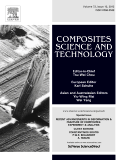
COMPOSITES SCIENCE AND TECHNOLOGY
Elevating Standards in Composite Research and DevelopmentComposites Science and Technology, a premier journal published by Elsevier Sci Ltd, serves as a vital resource in the fields of composite materials and engineering. With an impressive 2023 impact factor reflecting its influential contributions, this journal has established itself within the top tier of academic publishing, flaunting a Q1 ranking in both the Ceramics and Composites and Engineering (Miscellaneous) categories. Covering a diverse range of topics from the development of novel composite materials to their practical applications across various industries, it is recognized for its rigorous peer-review process and high-quality research outputs. As reflected in its Scopus rankings, Composites Science and Technology places in the 97th percentile among general engineering journals and the 94th percentile amongst ceramics and composites science literature. Researchers and professionals alike benefit from its comprehensive access to cutting-edge discoveries and advancements, making it an indispensable tool for driving innovation within this dynamic field.